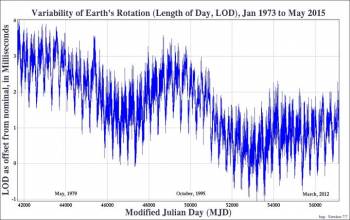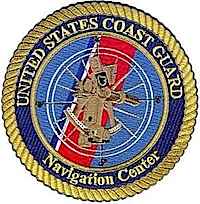(UPDATED January 1, 2017) A positive leap second was inserted between second 23:59:59 UTC of 31 December and second 00:00:00 UTC of 1 January 2017. This extra second is displayed on UTC clocks as 23:59:60. The last leap second was introduced in UTC on 30 June 2015 at UTC 23:59:60
(UPDATED January 1, 2017) A positive leap second was inserted between second 23:59:59 UTC of 31 December and second 00:00:00 UTC of 1 January 2017. This extra second is displayed on UTC clocks as 23:59:60. The last leap second was introduced in UTC on 30 June 2015 at UTC 23:59:60
The decision to add a leap second is made by the International Earth Rotation and Reference Systems Service (IERS), an international standards body, to accommodate for variations in the Earth’s rotational speed. Leap seconds are incorporated into Coordinated Universal Time (UTC), a time scale maintained cooperatively by many countries, using atomic clocks.
GPS System Time, a time scale that is referenced to UTC as it was in 1980, does not incorporate leap second changes. However, GPS satellites broadcast the offset to current UTC in their navigation messages as leap-second-correction information. Systems that use embedded GPS receivers as time references must be designed to accommodate the occurrence of leap seconds.
GNSS receiver manufacturers and end users are responsible for ensuring that their hardware and software recognizes and manages the leap second correctly. Errors and equipment failures have occurred in the past when GPS receivers and clocks process the leap second signal incorrectly.
Last October, the Department of Homeland Security (DHS) National Cybersecurity and Communications Integration Center (NCCIC) issued a “best practices” document
to assist federal, state, and local public agencies and private sector
organizations to prepare for the leap second event that took place on New Year’s Eve.
Receivers designed and built to the latest GPS interface specification (IS) document IS-GPS-200H should not experience problems with the leap second. The leap second correction information is contained within the GPS navigation (NAV) message, sub frame 4, page 18. IS-GPS-200H sections “3.3.4 GPS Time and SV Z-Count” on page 40; “20.3.3.5.2.4 Coordinated Universal Time (UTC)” on page 123; and “30.3.3.6.2 UTC and GPS Time” on page 180 provide detailed information related to the leap second.
The DHS white paper also addresses the issue of leap-second preparation for Network Time Protocol (NTP) servers and client systems.





